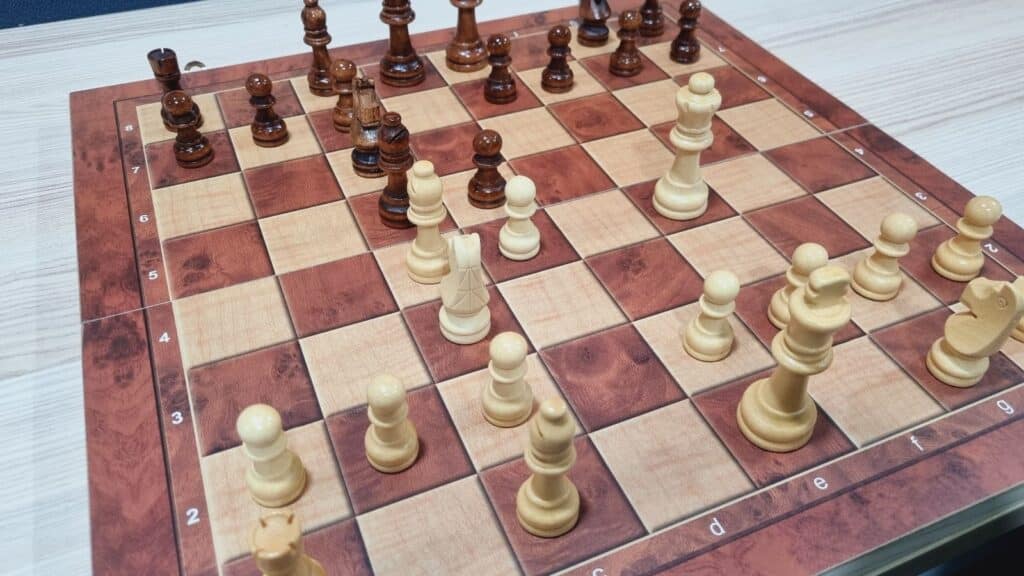
The copycat, as the name says, is a trap that is caused by a player who is mimicking the moves made by the player on the other side of the board.
Due to its nature, the copycat trap is mostly attempted by the player using the black piece set, since the white is the one that always makes the first move.
From then on, the player who is using the black pieces does nothing but repeat the moves made by the white pieces.
That normally tempts the player with the black pieces to make a bold move or change the strategy since he thinks the opponent has already discovered his strategy. However, in most cases, the copycat trap ends in defeat.
The Copycat Trap In Chess
That is because mimicking the opponent’s moves can only be done until the one imitating the opponent’s moves gets in check and, once in check, the threatened player is obligated to make any possible move that saves the king from being captured.
So, however efficient in causing your opponent to see his strategy from a different perspective or misleading them into thinking you caught their strategy, there are some perks involved in the copycat trap.
It May Pose More Risk
Therefore, upon attempting to trap your opponent by mirroring moves, make sure to stop before it gets too dangerous for you and you find yourself risking more than you want to. In the end, just like most games, chess players are rewarded for innovation.
Since the copycat trap in chess is an exact mirroring of your opponent’s moves, there are many ways to pull it off.
How To Pull It Off
One of the most common, however, begins with e4 and e5, then Nf3 and Nf6 when the white knight should take the black pawn and the black knight responds by capturing the white pawn.
Now, if white moves Qe2, black should retreat the knight in order to save it, which allows a discovered check as the white moves Nc6 and the black king is directly threatened by the white queen.
Upon that, the black should move Be7 to cover the king, which will leave the black queen open to be captured by the white knight. Even though white ends up losing a knight to the black king, it captures the queen, which is a highly favorable trade.
In a different scenario, once each knight captures the opponent’s pawn, black can prevent the knight from being captured by the queen by moving d5.
With that happening, white should move d3 and black to Qe7 to block the check. If this stance is reached, should the white pawn capture the black knight, the black queen can even the odds by taking the white knight.
Since the white pawn has moved diagonally to capture the black knight, the black queen will no longer be threatened by the white queen.
So, be careful when moving your knight for the first time, since an exact mirroring shouldn’t be with Nf6, rather than with an Nc6.


